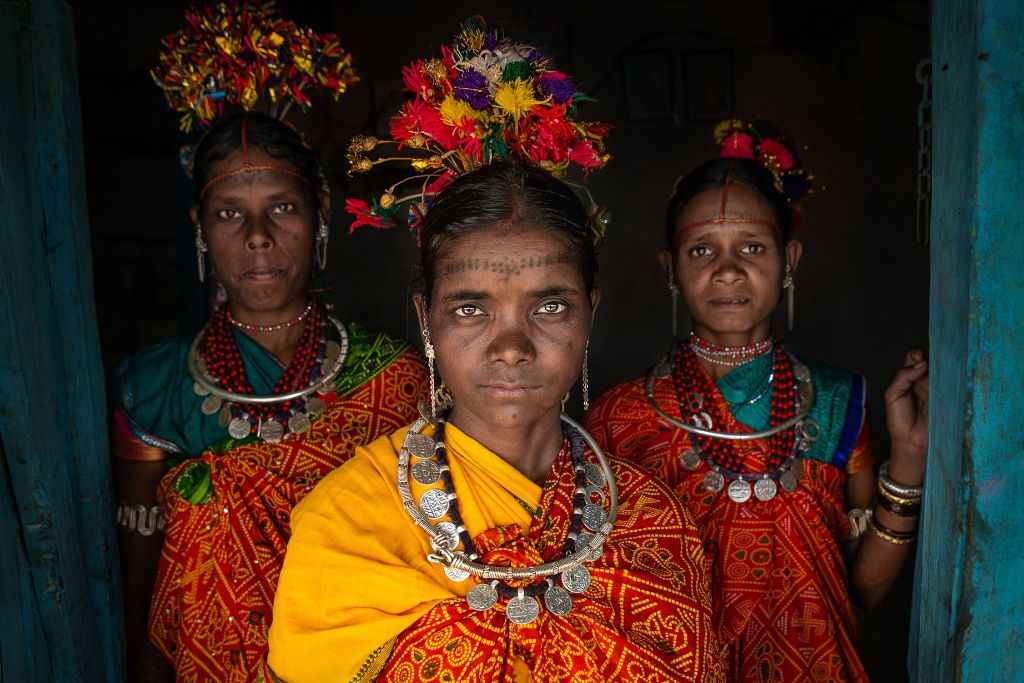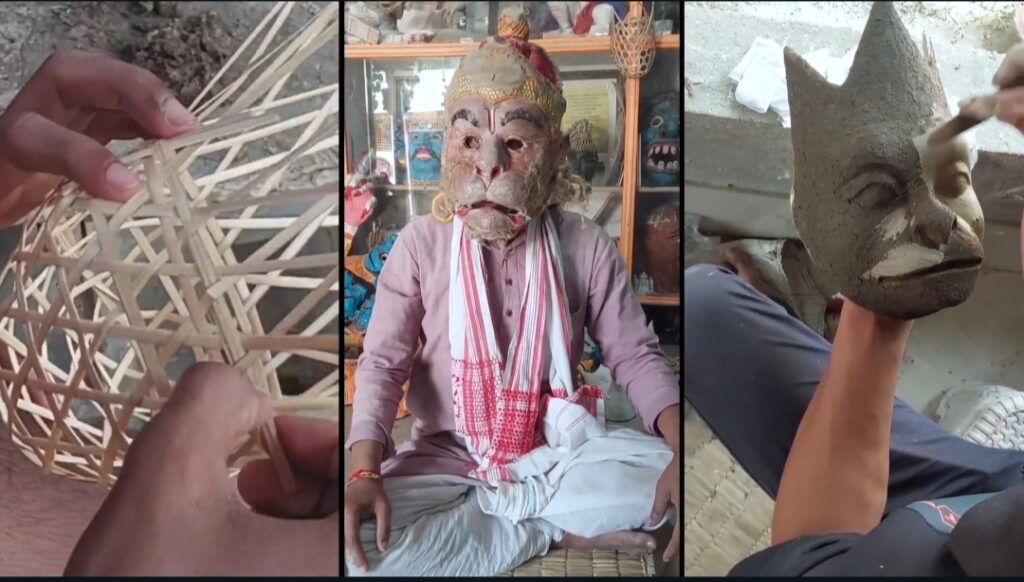With the recent COVID-19 surge we have realized the importance of a strong public healthcare system. At the grassroots level, the Indian public health care system has health subcenters established in such a way that it caters to 5,000 people; 3000 in case of desert / hilly / tribal areas.
These health subcenters are vital for the rural population as they are the villagers’ primary point of access to the public health care system. Usually, the main focus of the subcenters is reproductive and child health care services.
However, during the pandemic the health subcenters can also serve as testing and vaccination centers, in addition to spreading awareness about coronavirus and COVID-19 safety mandates. To this effect, a community has established a new health subcenter in its village.
Shared space
Ovangadh is a small village in Sayla administrative block of Surendranagar district in Gujarat. It is approximately 135 km from Ahmedabad. It has about 250 households, and the population is around 1,400. Village literacy rate is 54.4% and the female literacy rate is 20.2% according to 2011 Census.
Ovangadh did have a subcenter as per records. Health related diagnostics and primary health care were carried out in the anganwadi (children’s day care center). It catered to pregnant women, new mothers and new born babies before the start of the pandemic.
As the anganwadi and the health subcenter functioned in a single small room, neither could offer good services. There was no privacy, and hence pregnant women avoided coming for a checkup. There were no beds and space for seating area in the anganwadi.
Need for exclusive center
Often people had to travel to other places for treatment. They had to go to the primary health center in Sudamada village which is 6 km away. If the health worker was not available, they had to go to Sayla which is 20 km away.
Going to other places was a problem for women as they had to depend on others to go to the medical center even for basic treatments. It was impossible to treat anyone with a contagious disease or even a common flu, since it posed a risk to others, especially pregnant women and children.
Villagers felt the lack of a separate health center acutely during the pandemic, as there was no designated space for testing for coronavirus or vaccination. In such a scenario, it was a comment that motivated Hansa Sarvaiya, an accredited social health activist (ASHA) that Ovangadh should have a health subcenter.
“I was in a meeting at a primary health center when someone mentioned ‘Ovangadh’s health subcenter’; I was shocked because there was no subcenter in Ovangadh,” said Hansa Sarvaiya. Community leaders also felt the need for a fully functional subcenter in their village.
Health committee
Things started falling in place when Ashish Bhatti, a multi-purpose health worker was assigned Ovangadh. Though a health committee existed in the village, it was dormant. With the help of Hansa Sarvaiya and Parul Lakum, a health worker, Bhatti revived the health committee.
In addition to Ashish Bhatti, Hansa Sarvaiya and Parul Lakum , the health committee consists of Jasu Sarvaiya the woman sarpanch, Jaydevsinh Padiyar the talati (village accountant), Vinu Vaniya the anganwadi worker and Kanchan Pandya the anganwadi helper.

Bhatti motivated the committee members and emphasized the need for a subcenter, as many people avoided visiting the anganwadi for a checkup. With COVID-19 cases increasing in rural areas, the committee realized the importance of a subcenter, and that it could double as a vaccination, testing site and information site.
The makeover
As the local school had started functioning in a new building, Bhatti and Sarvaiya convinced village leaders to allot an empty hall in the old school building which was no longer in use. The health committee approached Dinesh Chapra, head of the school. After he agreed, the sarpanch (village chief) also gave permission.
The hall needed to be renovated and equipped. Ashish Bhatti, Hansa Sarvaiya and Parul Lakum spent their own money for the renovation work which included fixing and painting the room, buying medical tools, buying a bed and curtains, fencing the subcenter, and equipping it with other miscellaneous items.
New health subcenter
The community efforts paid off and in January 2021, the health subcenter was opened in Ovangadh. The headmaster Chapra and the sarpanch Jasu Sarvaiya decided not to charge any rent for the building. Bhatti, Sarvaiya and Lakum, and the panchayat at times, foot the electricity bills. The trio had pooled in and spent a total of almost Rs 20,000 for the renovation. Panchayat ensures water supply and pays for the health workers.
Parul Lakum and Ashish Bhatti manage the health subcenter. ASHA and anganwadi workers support the activities of the heath subcenter. Anganwadi provides healthcare and nutritional services to children and pregnant women. They lend support in vaccination too.
Sarpanch represents the panchayat and talati represents the government. They ensure that the subcenter has all the necessary resources required for it to function smoothly. The subcenter remains open from 8am to 5pm from Monday to Saturday. Due to COVID-19, it functions from 8am to 5pm on Sundays too.
“Anganwadi did not have space but the new center is big enough. For the village the health center is a blessing,” said Kanu Sarvaiya, a villager. “The staff are very helpful and they even do home visits for patients who cannot to get out of the house.”
Maternal health care
The new health center has allocated space for a bed and seating area with chairs. With a bigger hall with curtains, privacy is not a concern anymore, and this has encouraged more women to access the center during and after pregnancy. Health workers have helped with six pregnancies during the pandemic.
“I was very comfortable visiting the new place since I had full privacy. I received calcium and iron supplements, all the medications, tips on balanced diet and counselling during my pregnancy,” said Mamta Mer, a new mother. “I got my routine tests done and I was sent to the doctor for my checkups.”
Mer acknowledged that the women in the health committee guided her on how to feed, bathe, and take care of the baby. “I am happy that I did not have to go to other villages and received total care in my village surrounded by the people I know and trust,” she said.
“Now it’s easy for the health workers to meet the pregnant women at a designated place and help them before and after pregnancy,” said Shanu Gabu, a member of a women’s group that supplies free meals to women coming for delivery and the accompanying family member.
Vaccination center
As the subcenter is in a prominent place in the village, it has become popular among the residents of neighboring villages too. Till 20 June they have vaccinated a total of 264 people (182 people of 45+ age group, and 82 people 18-45 age group).

“My entire joint family of 14 people including me were vaccinated at the health center. Aga Khan organization and the village leaders have done an excellent job of awareness about COVID and vaccination,” said Ghanshyam Paraliya, a villager. Due to awareness campaigns by the health committee and Aga Khan Rural Support program (India) [AKRSP(I)], villagers are keen to get themselves vaccinated.
But due to a shortage in vaccine supply, the subcenter has been able to vaccinate only a limited number of people. “Initially the health workers used to go door to door for vaccination drive and now the situation has changed to the extent where people are willing to get vaccinated. The staff are very enthusiastic and always ready to help,” said Paraliya.
Since inception, the health subcenter has distributed masks, did door-to-door temperature and oxygen level screening. As the subcenter is spacious, patients and visitors are able to follow physical distance. The center has vaccinated three people against TB, and all the children below five have received their recommended vaccine doses.
“My family and I were very skeptical about vaccination initially but after seeing more and more people getting vaccinated, we also went,” said Kanu Sarvaiya. “If the subcenter was not there in our village, we would not have taken the vaccine.”
Permanent change
The health subcenter caters to three villages, namely, Ovangadh, Shantinagar, and Gundiyawada. With the anganwadi and health subcenter functioning in separate buildings, more people have started utilizing the health care facilities.
AKRSP(I) has installed a no-contact hand wash unit at the subcenter, to encourage hand washing habit among people. AKRSP(I) also established a soap bank at the school to promote frequent hand washing habit among children. The infrastructure was developed as a part a project funded by DFID and Hindustan Unilever.
Community members, especially the strong women of the health committee, have worked hard to make this subcenter a reality. As they achieved this by wanting to make a change instead of accepting the situation, everyone is confident that the subcenter will continue to function even after normalcy returns.
Kartik Joshi is a program specialist at Aga Khan Rural Support Program (India). Views are personal. Email: Kartik.joshi@akdn.org


